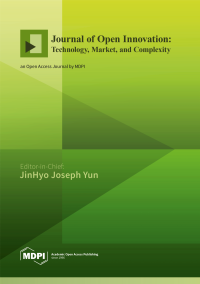Open Innovation and Business Model in the Global Economic Crisis Which is Triggered by the Pandemic of COVID-19
A special issue of Journal of Open Innovation: Technology, Market, and Complexity (ISSN 2199-8531).
Deadline for manuscript submissions: closed (31 December 2021) | Viewed by 184097
Special Issue Editors
Interests: open innovation; business model; open innovation economy; social open innovation; Schumpeterian dynamics; complexity; game theory; political economics
* Managing Guest Editor
Interests: technology management and technology policy; network organization governance; knowledge management; human resources management
Interests: operations and supply chain management (OSCM) modeling and applications under risk; service operations and quality management; inventory management; analytics and data-driven optimization; operations finance/marketing interfaces
Special Issue Information
Dear Colleagues,
This Special Issue will publish some selected papers from the annual conference of SOI 2021. Suitable topics include but are not limited to:
- Micro and macroeconomics of open innovation dynamics
- Open business models;
- Schumpeterian economics, growth of knowledge, and open innovation;
- Sharing economy and open business model platforms;
- Complexity in open innovation;
- Green economics, open innovation, and regional innovation system;
- Catch-up open innovation, and convergence;
- Digital revolution, Entrepreneurship, and open innovation;
- Common good open innovation;
- Natural experiment, deep interview, or participatory observation for OI research;
- Industry innovation ecosystem design and strategic development;
- Open innovation and strategic competitiveness;
- Measuring business excellence and case studies for sustainability;
- Patent analysis and open innovation;
- Innovation Ecosystem for sustainable development in China;
- Beyond innovation, beyond smart city;
- Entrepreneurship and Technology based firms;
- Open innovation in the growth of knowledge.
Time schedule of this special issue:
- Special issue Open: 10 June 2021
From 10 June 2021, any SOI 2021 authors in addition to the planned papers can submit to this special issue after full paper submission to SOI 2021 platform and paying the registration fee until 10 June 2021.
- Close: 31 December 2021
All papers should be submitted to this special issue until 31 December 2021.
- SOI 2021 best paper recommendation condition
The best paper award of SOI 2021 will be chosen from papers which were selected for the Special Issue of JOI for SOI 2021, and submitted at the JOI until 1 July 2021.
- SOI 2021 keynote papers
The Article Processing Charges (APC) of the keynote speech papers of SOI 2021 will be supported by SOI if the paper was passed the regular review process. The authors of these papers should include an acknowledgement section following the example below:
Funding: This paper was presented as a keynote speech of SOI 2021, and the publishing fee of this paper was funded by SOI 2021-1.
Prof. Dr. JinHyo Joseph Yun
Prof. Dr. Lei Ma
Prof. Dr. Sungyong Choi
Guest Editors
Manuscript Submission Information
Manuscripts should be submitted online at www.mdpi.com by registering and logging in to this website. Once you are registered, click here to go to the submission form. Manuscripts can be submitted until the deadline. All submissions that pass pre-check are peer-reviewed. Accepted papers will be published continuously in the journal (as soon as accepted) and will be listed together on the special issue website. Research articles, review articles as well as short communications are invited. For planned papers, a title and short abstract (about 100 words) can be sent to the Editorial Office for announcement on this website.
Submitted manuscripts should not have been published previously, nor be under consideration for publication elsewhere (except conference proceedings papers). All manuscripts are thoroughly refereed through a single-blind peer-review process. A guide for authors and other relevant information for submission of manuscripts is available on the Instructions for Authors page. Journal of Open Innovation: Technology, Market, and Complexity is an international peer-reviewed open access quarterly journal published by MDPI.
Please visit the Instructions for Authors page before submitting a manuscript. The Article Processing Charge (APC) for publication in this open access journal is 800 CHF (Swiss Francs). Submitted papers should be well formatted and use good English. Authors may use MDPI's English editing service prior to publication or during author revisions.






